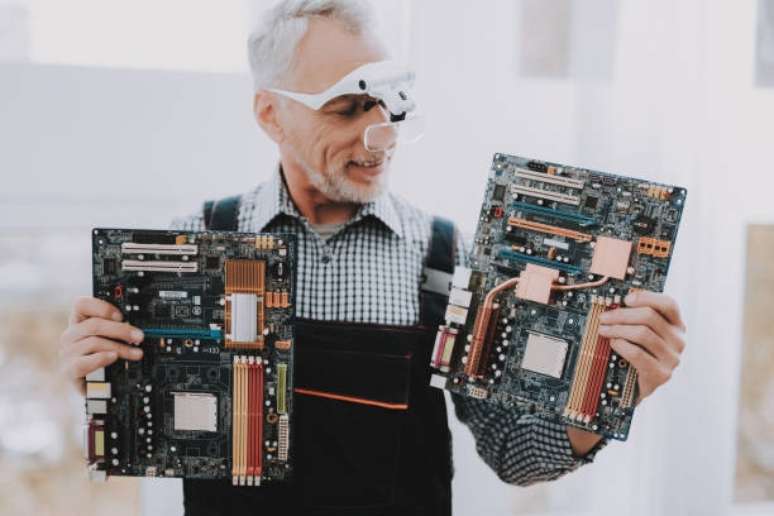Industrial motherboards are designed to cater for a variety of scenarios where hardware reliability and durability are critical.
The “motherboard” is the main circuit board in a computer and is where the central processing unit is located. In addition, the part is also responsible for connecting and interconnecting all the components, such as a processor with RAM memory, hard drive, graphics card, among others.
The industrial “motherboard” consists of hardware designed for use in industrial environments, generally offering more features and customization options than consumer boards. According to Advantech Brasil Key Accountant Anderson Zardo, even industrial “motherboards” are usually much more reliable and resistant to shock and vibration. “Users also tend to have more connectivity and expansion options, such as additional expansion slots, more flexible connectivity ports, and redundant power options,” he said.
In Zardo’s analysis, comparing industrial “motherboards” (industrial hardware) with commercial ones, it is important to highlight three main points: robustness, adaptability and lifespan of a component (roadmap). “When we talk about ruggedness, it means that industrial-grade equipment has much stronger components in their construction than commercial equipment,” he analyzes.
According to the expert, the tests carried out are much more stringent and thorough due to the application of this type of equipment and therefore, they are designed to operate much longer with a much lower failure rate, making them much more durable and reliable . . “Industrial hardware is designed for extreme applications where factors such as temperature from -40°C to 85°C, humidity, dust and vibrations can damage equipment not designed for this type of environment,” explains Zardo.
Regarding adaptability, the Advantech Brasil Key Accountant points out that industrial hardware has different manufacturing sizes (form factor) to be used where space is a limiting factor and can be added with ports or modules to meet a specific application. “Commercial motherboards are designed to meet the basic needs of a home or office user, while industrial boards are adaptable in design based on their application,” he clarifies, adding that industrial hardware can be expanded from any port (I/O) that is essential or lacks any other that will not be used, aiming at cost reduction.
According to Zardo, the last point is the duration of a piece of equipment, called a roadmap. Commercial “motherboards” normally have a production cycle of about two years, while industrial cards have a much longer cycle that can reach twelve years. “For equipment manufacturers that have incorporated a board into their solution, this factor is extremely important, as it avoids the need to redesign an entire project due to a board being discontinued,” he says.
The Advantech Brasil Key Account points out that there is a price difference between industrial hardware versus commercial hardware. To the expert, there are features that make industrial hardware much more durable and reliable. “By using an industrial motherboard, maintenance costs are significantly reduced,” concludes Zardo.
To find out more just go to: (3) Advantech Brazil: my company | LinkedIn OR https://www.advantech.com.br/
Source: Terra
Rose James is a Gossipify movie and series reviewer known for her in-depth analysis and unique perspective on the latest releases. With a background in film studies, she provides engaging and informative reviews, and keeps readers up to date with industry trends and emerging talents.


![It All Begins Here: What’s in store for Tuesday 21 October 2025 Episode 1289 [SPOILERS] It All Begins Here: What’s in store for Tuesday 21 October 2025 Episode 1289 [SPOILERS]](https://fr.web.img3.acsta.net/img/99/48/99481db5c03e1ff295fce95b23125991.jpg)



